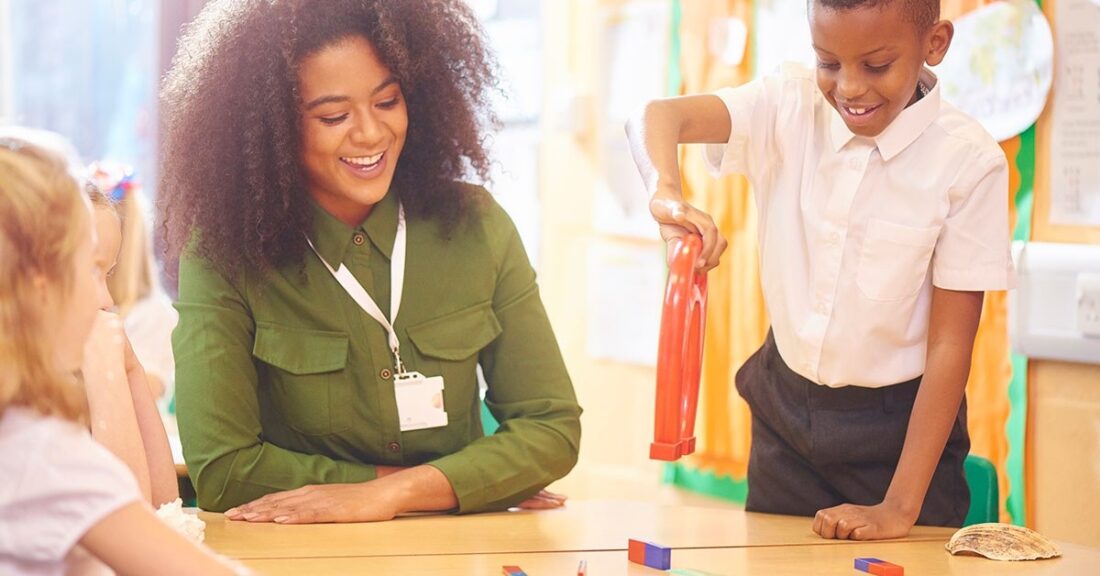What Are Community Schools?
How Are They Helping Young People and Families in Baltimore?

Baltimore’s children and youth are curious and eager to learn. But too many are unable to realize their full potential in traditional public schools, which have been chronically underfunded and often lack the resources to meet students’ learning and developmental needs.
In 2019, only 70% of high school seniors in Baltimore City graduated, a large majority of high school students were not reading at grade level and chronic absenteeism remained a significant challenge — one that has only been exacerbated by the COVID-19 pandemic.
Community schools, which take a more holistic approach to educating and supporting young people and their families, are trying to tackle these barriers and help students stay healthy, thrive socially and succeed academically.
The Community School Model
The concept of community schools dates back to the early 20th century, with education reformer John Dewey making the case for schools to serve as “social centers” to help address students’ comprehensive needs. As enthusiasm for community schools grew, Congress established the 21st Century Community Learning Centers initiative and the Full-Service Community Schools Program to fund wraparound academic, social and health services for students and family members living in high-poverty neighborhoods.
Today, the community school model is widely accepted and provides an evidence-based framework for supporting children’s complete well-being, both inside and beyond the classroom. Community schools generally partner with an outside entity — such as a local nonprofit, university program or the school district itself — to lead the strategy. Usually, that partner will then hire on-site coordinators to work with the school’s leadership team to implement a plan that is developed based on a community needs assessment. These assessments look at local factors including access to physical and mental health care, as well as the availability of tutoring and other after-school programs for young people.
Along with building a strong instructional program for all students, community schools develop partnerships with outside organizations to provide in-house resources and services that support young people’s social and emotional needs, and provide them with academically enriching activities, both after school and in the summer.
Recognizing that educational performance is heavily influenced by the circumstances students face at home, community schools provide wraparound support to families — including help meeting basic needs, such as housing and food, and job placement assistance. Community schools also focus on developing youth leaders and engaging with families to help them take part in key decision-making processes.
Community schools tend to stay open longer hours during the week, as well as on the weekends and in the summer, so students and families can access these services when they need them.
Stepping Up During the Pandemic
Today, the community school model has been embraced by districts across the country. In Baltimore City, for example, the number of community schools has jumped from 50 in 2019 to 128 in 2021. Seventy-seven percent of district schools are now considered community schools, including 28 that serve high school students. The Annie E. Casey Foundation has invested in community school programs for many years, including the Benjamin Franklin High School at Masonville Cove and Elev8 Baltimore, as part of its mission to support youth and family well-being in its hometown.
Baltimore’s community school teams have played an important role in helping staff, students and families cope with the enormous changes brought on by the COVID-19 pandemic. In some cases, community school coordinators worked closely with trained counselors to address the social and emotional needs of students. Other schools stepped in to help students gain access to computers and internet so kids could take part in online classes.
Community schools in Baltimore have also provided free meals to families during the pandemic and performed wellness checks at students’ homes to ensure they are able to meet basic needs. One community school established health markets, where families could pick up food, get information — in multiple languages — about health issues, receive help applying for benefits such as health insurance, and get referrals to mental health and substance abuse treatment.
What’s Ahead for Community Schools
Baltimore City Public Schools, with support from the Casey Foundation, Maryland Out of School Time Network and Family League of Baltimore, has hired a consultant to help develop a strategic long-term plan for sustaining and strengthening its community schools. While the key strategies will be jointly determined by a diverse group of community school stakeholders, the plan likely will include recommendations for tracking and supporting student achievement and reengaging students who have stopped attending school. In Baltimore and across Maryland, community schools in areas with concentrated poverty will also be eligible for additional state funding through a newly enacted education reform plan.
Learn more about the community school site at Benjamin Franklin High School






